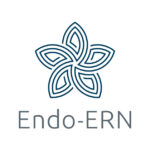 A survey, organized by the working group Research and Science of the European Reference Network on rare endocrine conditions (Endo-ERN) is being conducted. The aim of this survey is to gain the views and experiences of people living with rare endocrine disorders about the research they think should be prioritized related to their disease within European countries. Patients, parents, and relatives can participate in this study by following this link.
A survey, organized by the working group Research and Science of the European Reference Network on rare endocrine conditions (Endo-ERN) is being conducted. The aim of this survey is to gain the views and experiences of people living with rare endocrine disorders about the research they think should be prioritized related to their disease within European countries. Patients, parents, and relatives can participate in this study by following this link.
Featured posts
Self-help for improving the quality of life of people with rare diseases and their families
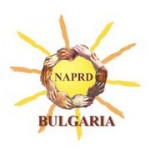 The National Alliance of People with Rare Diseases is organizing a training seminar on “Self-Help for Improving the Quality of Life of People with Rare Diseases and Their Families”. The event will be held on March 28-29, 2020, at “Rusalka” Hotel, Plovdiv, Bulgaria. Some of the topics, which will be discussed are going to be focused on the biggest problems such as “Stress from diagnosis and its effect on the immune system”, “Psychophysical practices for strength, health and immunity” and many other interesting discussions. The event will include fascinating speakers such as Dr. Maria Ivanovska, Marin Minchev and many others. For more information click here.
The National Alliance of People with Rare Diseases is organizing a training seminar on “Self-Help for Improving the Quality of Life of People with Rare Diseases and Their Families”. The event will be held on March 28-29, 2020, at “Rusalka” Hotel, Plovdiv, Bulgaria. Some of the topics, which will be discussed are going to be focused on the biggest problems such as “Stress from diagnosis and its effect on the immune system”, “Psychophysical practices for strength, health and immunity” and many other interesting discussions. The event will include fascinating speakers such as Dr. Maria Ivanovska, Marin Minchev and many others. For more information click here.
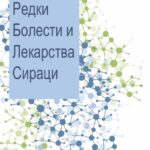 Since its inception 20 years ago, the National Institute for Health and Care Excellence (NICE) has established itself as a landmark in innovative healthcare technologies and the access to them. Indicative of the enormous interest in the experience of this organization is the existence of a special department for international cooperation, whose aim is to provide consultancy and expertise. Regulatory agencies around the world are closely following NICE’s decisions. A positive or negative opinion can predetermine patient access and clinical practice far beyond the UK. Almost at the very center of innovation in medicine and healthcare, in 2019 NICE announced that it would review and update its methodology for evaluating health technologies. For more information click here.
Since its inception 20 years ago, the National Institute for Health and Care Excellence (NICE) has established itself as a landmark in innovative healthcare technologies and the access to them. Indicative of the enormous interest in the experience of this organization is the existence of a special department for international cooperation, whose aim is to provide consultancy and expertise. Regulatory agencies around the world are closely following NICE’s decisions. A positive or negative opinion can predetermine patient access and clinical practice far beyond the UK. Almost at the very center of innovation in medicine and healthcare, in 2019 NICE announced that it would review and update its methodology for evaluating health technologies. For more information click here.
 The new issue of our scientific journal Rare Diseases and Orphan Drugs is now online. The issue contains 6 publications on various topics. The editorial is “ New methods for health technology assessement in response to the challenges of innovative therapies” If you would like to receive the latest information on rare diseases and orphan drugs, how the diagnostics and treatment is performed Bulgaria, please follow the link.
The new issue of our scientific journal Rare Diseases and Orphan Drugs is now online. The issue contains 6 publications on various topics. The editorial is “ New methods for health technology assessement in response to the challenges of innovative therapies” If you would like to receive the latest information on rare diseases and orphan drugs, how the diagnostics and treatment is performed Bulgaria, please follow the link.
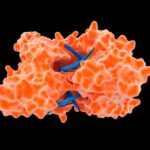 Alkaptonuria (AKU) is an ultrarare autosomal recessive disorder (MIM 203500) that is caused byby a complex set of mutations in homogentisate 1,2-dioxygenasegene and consequent accumulation of homogentisic acid (HGA), causing a significant protein oxidation. A secondary form of amyloidosis was identified in AKU and related to high circulating serum amyloid A (SAA) levels, which are linked with inflammation and oxidative stress and might contribute to disease progression and patients’ poor quality of life. Recently, we reported that inflammatory markers (SAA and chitotriosidase) and oxidative stress markers (protein thiolation index) might be disease activity markers in AKU. Thanks to an international network, we collected genotypic, phenotypic, and clinical data from more than 200 patients with AKU. These data are currently stored in our AKU database, named ApreciseKUre. In this work, we developed an algorithm able to make predictions about the oxidative status trend of each patient with AKU based on 55 predictors, namely circulating HGA, body mass index, total cholesterol, SAA, and chitotriosidase. For more information click here.
Alkaptonuria (AKU) is an ultrarare autosomal recessive disorder (MIM 203500) that is caused byby a complex set of mutations in homogentisate 1,2-dioxygenasegene and consequent accumulation of homogentisic acid (HGA), causing a significant protein oxidation. A secondary form of amyloidosis was identified in AKU and related to high circulating serum amyloid A (SAA) levels, which are linked with inflammation and oxidative stress and might contribute to disease progression and patients’ poor quality of life. Recently, we reported that inflammatory markers (SAA and chitotriosidase) and oxidative stress markers (protein thiolation index) might be disease activity markers in AKU. Thanks to an international network, we collected genotypic, phenotypic, and clinical data from more than 200 patients with AKU. These data are currently stored in our AKU database, named ApreciseKUre. In this work, we developed an algorithm able to make predictions about the oxidative status trend of each patient with AKU based on 55 predictors, namely circulating HGA, body mass index, total cholesterol, SAA, and chitotriosidase. For more information click here.
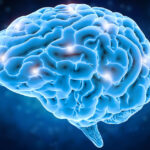 Amyotrophic lateral sclerosis is a fatal neurodegenerative disorder with progressive deterioration of both upper and lower motor neuron functions. It is a rare disease with one study demonstrating a prevalence of 3.9 cases per 100,000 in the USA in the year 2010-2011. It is a fatal disease with most of the deaths resulting from respiratory failure. There is no cure of this illness with some evidence supporting an improved median survival by two to three months with Riluzole (one of the agents used for treatment). Not much is known about the possible etiologies of ALS, a few studies have shown a possible likely association of ALS with various malignancies. Here we present an interesting case of a 35-year-old female with a diagnosis of chronic myeloid leukemia for seven years presented with a sub-acute decline in her motor function. For more information click here.
Amyotrophic lateral sclerosis is a fatal neurodegenerative disorder with progressive deterioration of both upper and lower motor neuron functions. It is a rare disease with one study demonstrating a prevalence of 3.9 cases per 100,000 in the USA in the year 2010-2011. It is a fatal disease with most of the deaths resulting from respiratory failure. There is no cure of this illness with some evidence supporting an improved median survival by two to three months with Riluzole (one of the agents used for treatment). Not much is known about the possible etiologies of ALS, a few studies have shown a possible likely association of ALS with various malignancies. Here we present an interesting case of a 35-year-old female with a diagnosis of chronic myeloid leukemia for seven years presented with a sub-acute decline in her motor function. For more information click here.
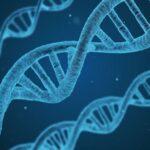 Diagnostic Exome Sequencing yields a single genetic diagnosis in approximately 30% of cases, and according to recent studies the prevalence of identifying two genetic conditions in a single individual ranges between 4.6 and 7%. We present a patient diagnosed with three different rare conditions, each explained by a pathogenic mutation in a different gene. A 17 year old female was evaluated for history of motor and speech delay, scoliosis, distinctive craniofacial features and dry skin in the Department of Clinical Genomics at Mayo Clinic. Previous diagnostic testing was unrevealing including biochemical testing, echocardiogram, abdominal ultrasound and electroencephalogram. For more information click here.
Diagnostic Exome Sequencing yields a single genetic diagnosis in approximately 30% of cases, and according to recent studies the prevalence of identifying two genetic conditions in a single individual ranges between 4.6 and 7%. We present a patient diagnosed with three different rare conditions, each explained by a pathogenic mutation in a different gene. A 17 year old female was evaluated for history of motor and speech delay, scoliosis, distinctive craniofacial features and dry skin in the Department of Clinical Genomics at Mayo Clinic. Previous diagnostic testing was unrevealing including biochemical testing, echocardiogram, abdominal ultrasound and electroencephalogram. For more information click here.
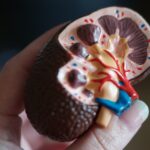 Peripheral neuropathy, organomegaly, endocrinopathy, monoclonal protein and skin changes (POEMS) syndrome is a rare disease, and only in a minority of cases, causes an impairment of kidney function. Here, we describe a case of a 55-year-old man with a history of POEMS syndrome who presented with acute kidney injury following a routine blood test. On further investigation, a relapse in POEMS syndrome was diagnosed, uniquely isolated to renal involvement. For more information click here.
Peripheral neuropathy, organomegaly, endocrinopathy, monoclonal protein and skin changes (POEMS) syndrome is a rare disease, and only in a minority of cases, causes an impairment of kidney function. Here, we describe a case of a 55-year-old man with a history of POEMS syndrome who presented with acute kidney injury following a routine blood test. On further investigation, a relapse in POEMS syndrome was diagnosed, uniquely isolated to renal involvement. For more information click here.
Frequently Asked Questions and Specific criteria for the ERNs call for membership updated
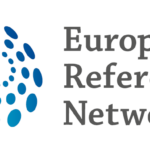 The European commission published a document with the last uptate of Frequently Asked Questions (FAQ) and Specific criteria for the ERNs call for membership. FAQ include the most common questions like: what is an ERN; what is the role of the Board of MS; are only rare diseases included in the scope of ERNs; How to apply to become a member of an ERNs; how will applications be assessed; what does the conflict of interest policy cover and many more. For more information click here.
The European commission published a document with the last uptate of Frequently Asked Questions (FAQ) and Specific criteria for the ERNs call for membership. FAQ include the most common questions like: what is an ERN; what is the role of the Board of MS; are only rare diseases included in the scope of ERNs; How to apply to become a member of an ERNs; how will applications be assessed; what does the conflict of interest policy cover and many more. For more information click here.
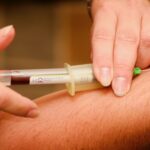 Current American Academy of Pediatrics guidelines for children with Down syndrome (DS) recommend a complete blood count (CBC) at birth and hemoglobin annually to screen for iron deficiency (ID) and ID anemia (IDA) in low-risk children. We aimed to determine if macrocytosis masks the diagnosis of ID/IDA and to evaluate the utility of biochemical and red blood cell indices for detecting ID/IDA in DS. We reviewed data from 856 individuals from five DS specialty clinics. Data included hemoglobin, mean corpuscular volume, red cell distribution width (RDW), percent transferrin saturation (TS), ferritin, and c-reactive protein. Receiver operating characteristic curves were calculated. Macrocytosis was found in 32% of the sample. If hemoglobin alone was used for screening, all individuals with IDA would have been identified, but ID would have been missed in all subjects. RDW had the highest discriminability of any single test for ID/IDA. The combination of RDW with ferritin or TS led to 100% sensitivity, and RDW combined with ferritin showed the highest discriminability for ID/IDA. We provide evidence to support that a CBC and ferritin be obtained routinely for children over 1 year old with DS rather than hemoglobin alone for detection of ID. For more information click here.
Current American Academy of Pediatrics guidelines for children with Down syndrome (DS) recommend a complete blood count (CBC) at birth and hemoglobin annually to screen for iron deficiency (ID) and ID anemia (IDA) in low-risk children. We aimed to determine if macrocytosis masks the diagnosis of ID/IDA and to evaluate the utility of biochemical and red blood cell indices for detecting ID/IDA in DS. We reviewed data from 856 individuals from five DS specialty clinics. Data included hemoglobin, mean corpuscular volume, red cell distribution width (RDW), percent transferrin saturation (TS), ferritin, and c-reactive protein. Receiver operating characteristic curves were calculated. Macrocytosis was found in 32% of the sample. If hemoglobin alone was used for screening, all individuals with IDA would have been identified, but ID would have been missed in all subjects. RDW had the highest discriminability of any single test for ID/IDA. The combination of RDW with ferritin or TS led to 100% sensitivity, and RDW combined with ferritin showed the highest discriminability for ID/IDA. We provide evidence to support that a CBC and ferritin be obtained routinely for children over 1 year old with DS rather than hemoglobin alone for detection of ID. For more information click here.
